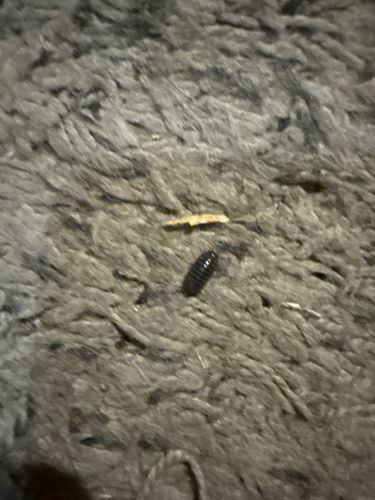Pill Bug / Roly Poly
Scientific Name: Armadillidium vulgare (Common Pill Bug is the most widespread species, but other species exist)
Order & Family: Order Isopoda, Family Armadillidiidae (for commonly seen species like Armadillidium vulgare)
Size: Typically 6 to 18 mm (0.24 to 0.71 inches) in length

Natural Habitat
Pill bugs require damp environments to survive as they breathe through gills-like structures and can easily dry out. They are commonly found under rocks, logs, leaf litter, decaying wood, compost piles, and other moist places. They can also be found in basements, crawl spaces, and gardens.
Diet & Feeding
Pill bugs are detritivores, meaning they feed on decaying organic matter. Their diet primarily consists of decaying plant material, such as leaves, wood, and other vegetable matter. They also consume fungi and occasionally animal remains. They are beneficial in breaking down organic material and returning nutrients to the soil.
Behavior Patterns
Pill bugs are primarily nocturnal. They are known for their distinctive ability to roll into a tight ball when threatened, a behavior called conglobation. This defensive mechanism helps protect their softer undersides from predators and desiccation. They are social creatures and are often found in groups. Their reproduction involves direct development, and females carry their eggs in a brood pouch (marsupium) until the young hatch.
Risks & Benefits
Potential risks are minimal; they are harmless to humans and do not bite or sting. In large numbers, they can sometimes damage young plants by feeding on tender roots or stems if other food sources are scarce, especially in damp conditions. However, their benefits largely outweigh the risks: they are important decomposers, helping to recycle nutrients in the ecosystem and improve soil quality. They can be an indicator of high moisture levels in indoor environments.
Identified on: 8/14/2025